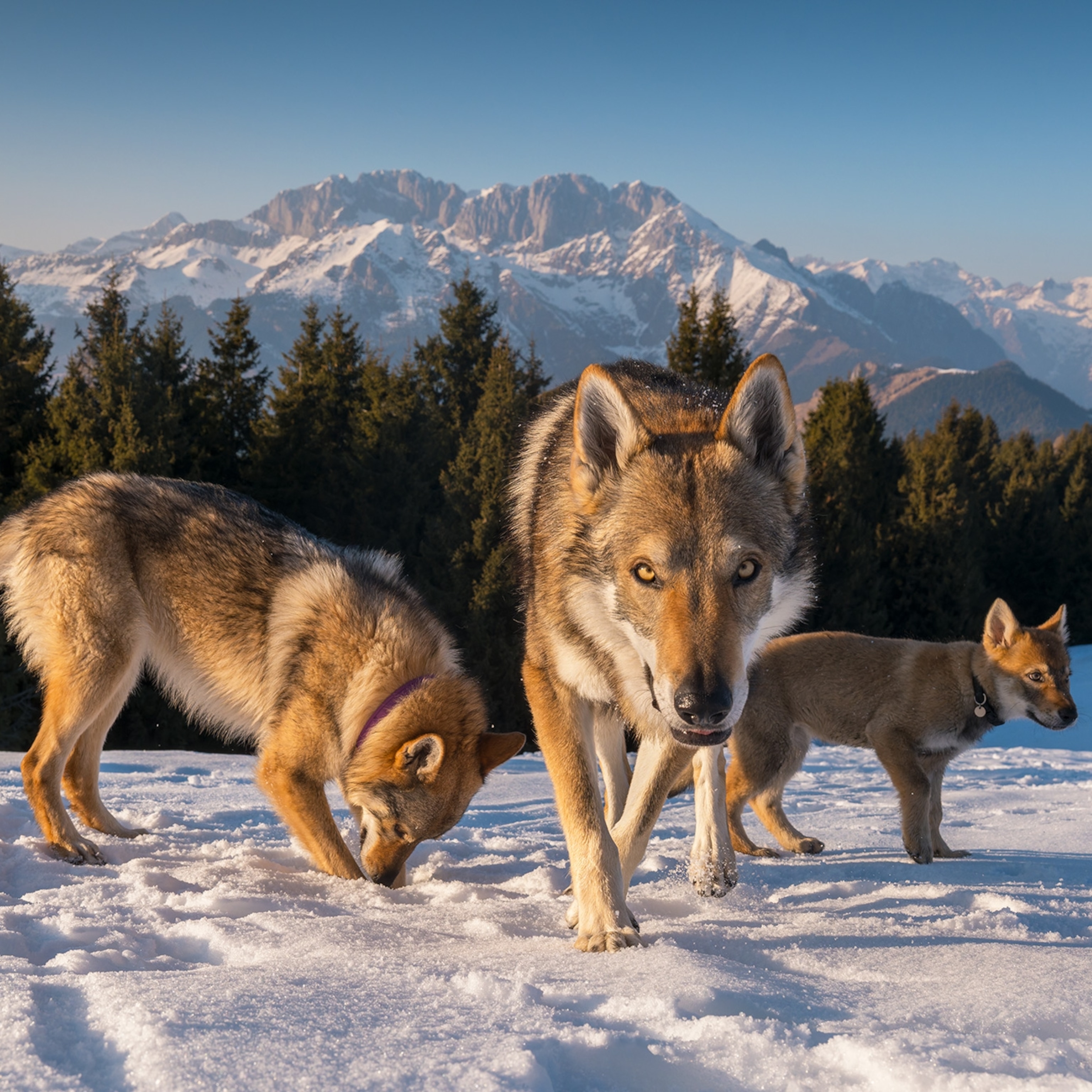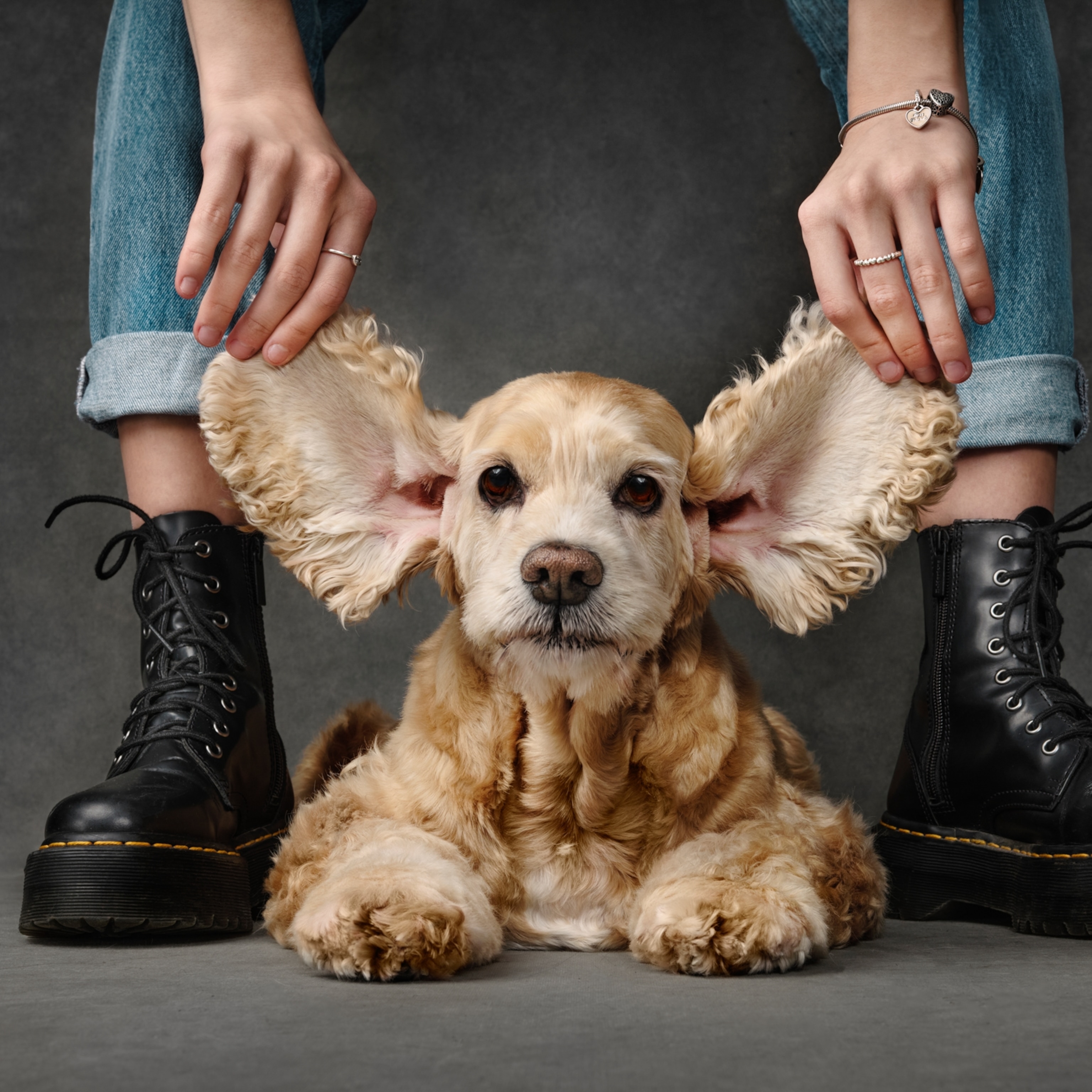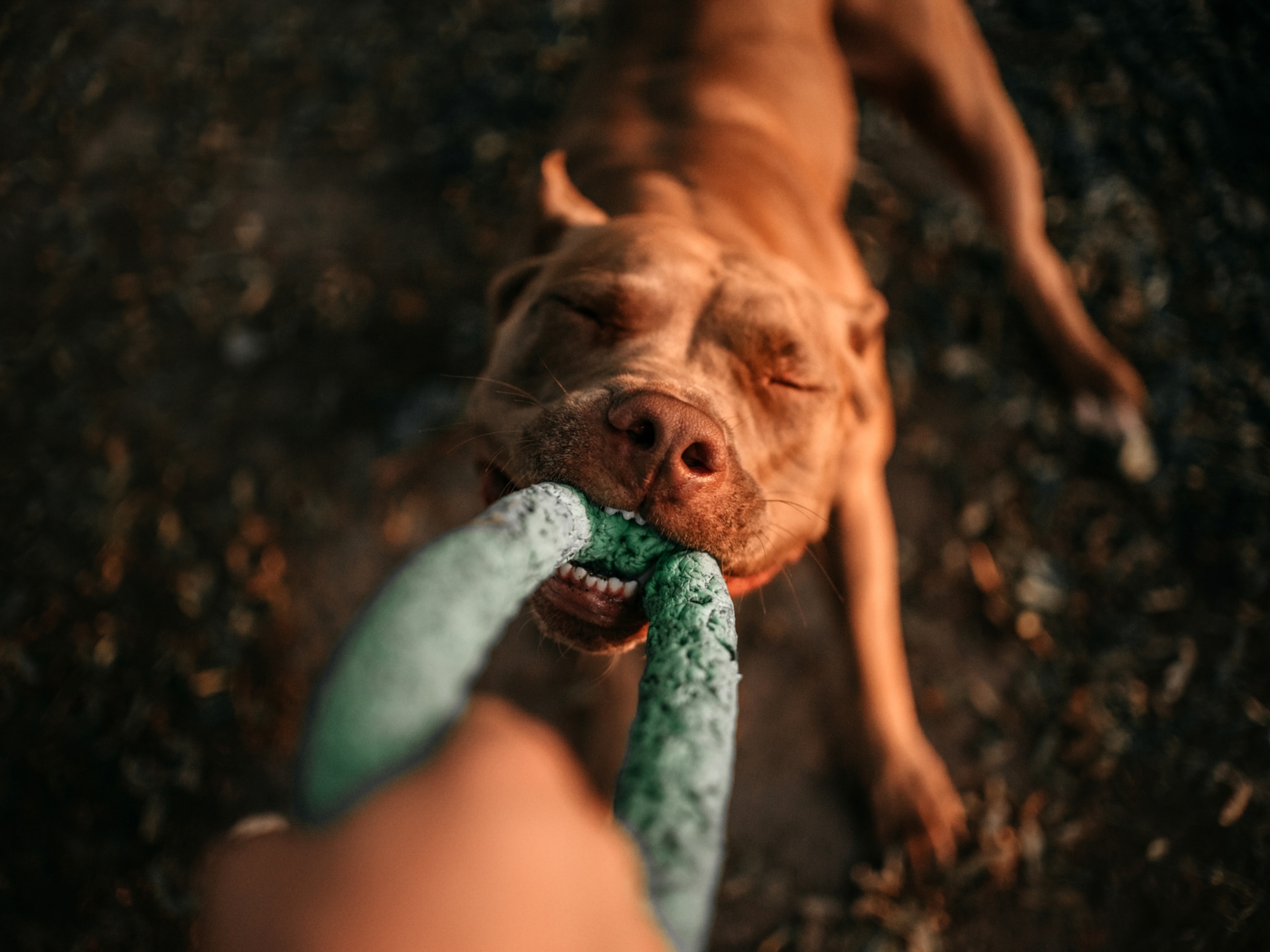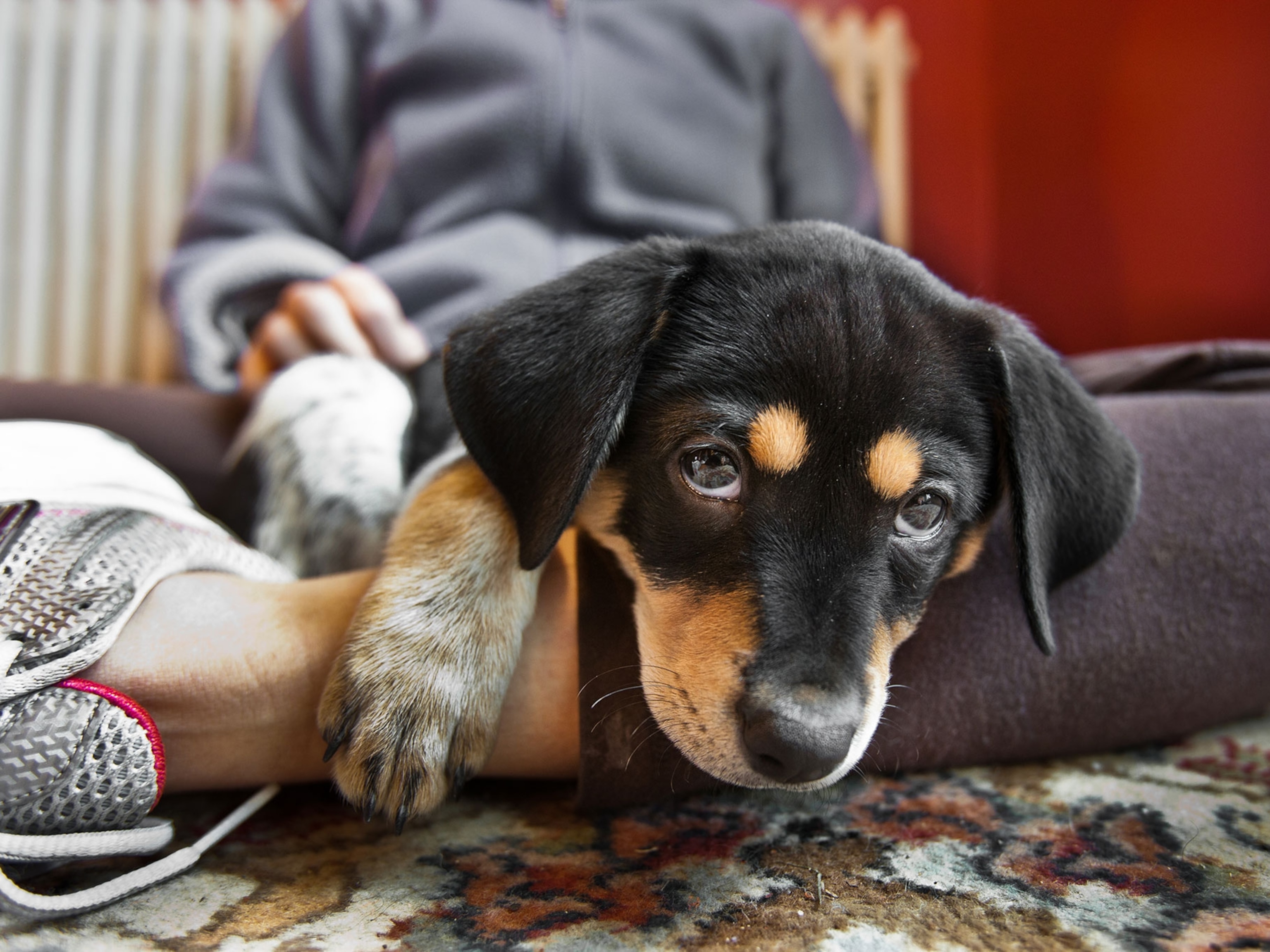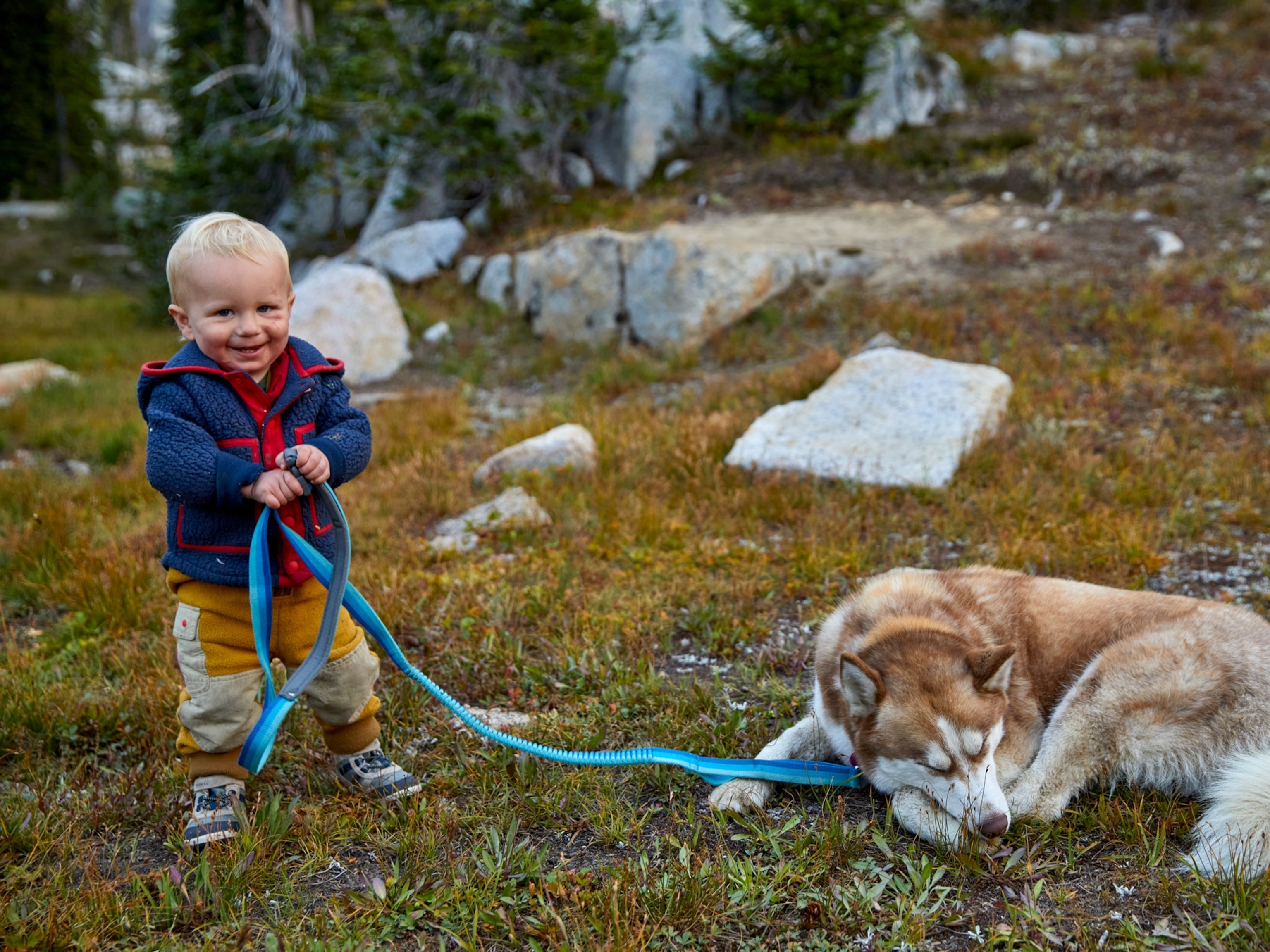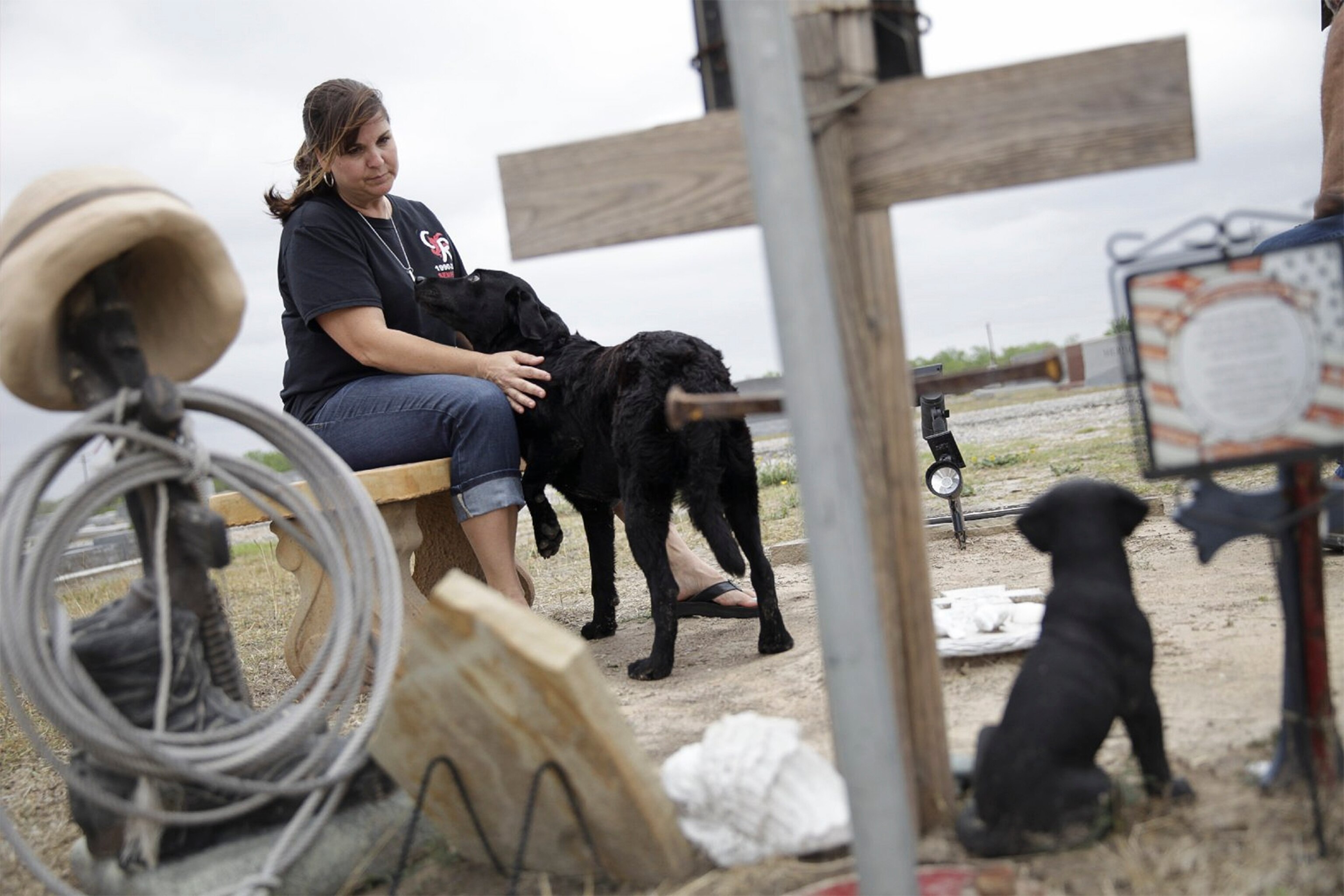
War Dog Helps Family Cope
After their son’s death in Afghanistan, a family adopts the dog he served with.
On each of the past three Memorial Days someone has left a can of dog food and a bottle of beer at Lance Cpl. Colton Rusk's gravesite in Orange Grove, Texas. A device for sweeping IEDs, a lucky baseball, and military coins also lie near his headstone. A black ceramic dog stands perpetual guard, and a pole installed by Colton's father, Darrell, flies the American flag.
Kathy Rusk, accompanied by her black Labrador retriever, Eli, comes to her son's grave at least three times a week. Three benches surround the grave, one for her, one for his father, and one for his two brothers to share. Kathy's bench bears the inscription "Smile for Me, My Texas Angel," Colton's favorite song.
On his 20th birthday, September 23, 2010, Colton was deployed as a Marine dog handler to Afghanistan, where he and his dog walked at the head of patrols, identifying improvised explosive devices (IEDs). Less than three months later, during a particularly violent period in Sangin, he was killed by enemy gunfire while on patrol.

Kathy says that when she sits on the bench, she thinks about Colton and how she took care of him as he grew up. She feels a constant pull to be with him. "The need to do for your child never stops."
Eli too had felt a need to protect Colton. The Lab was the first to run to the young marine's side when he was shot.
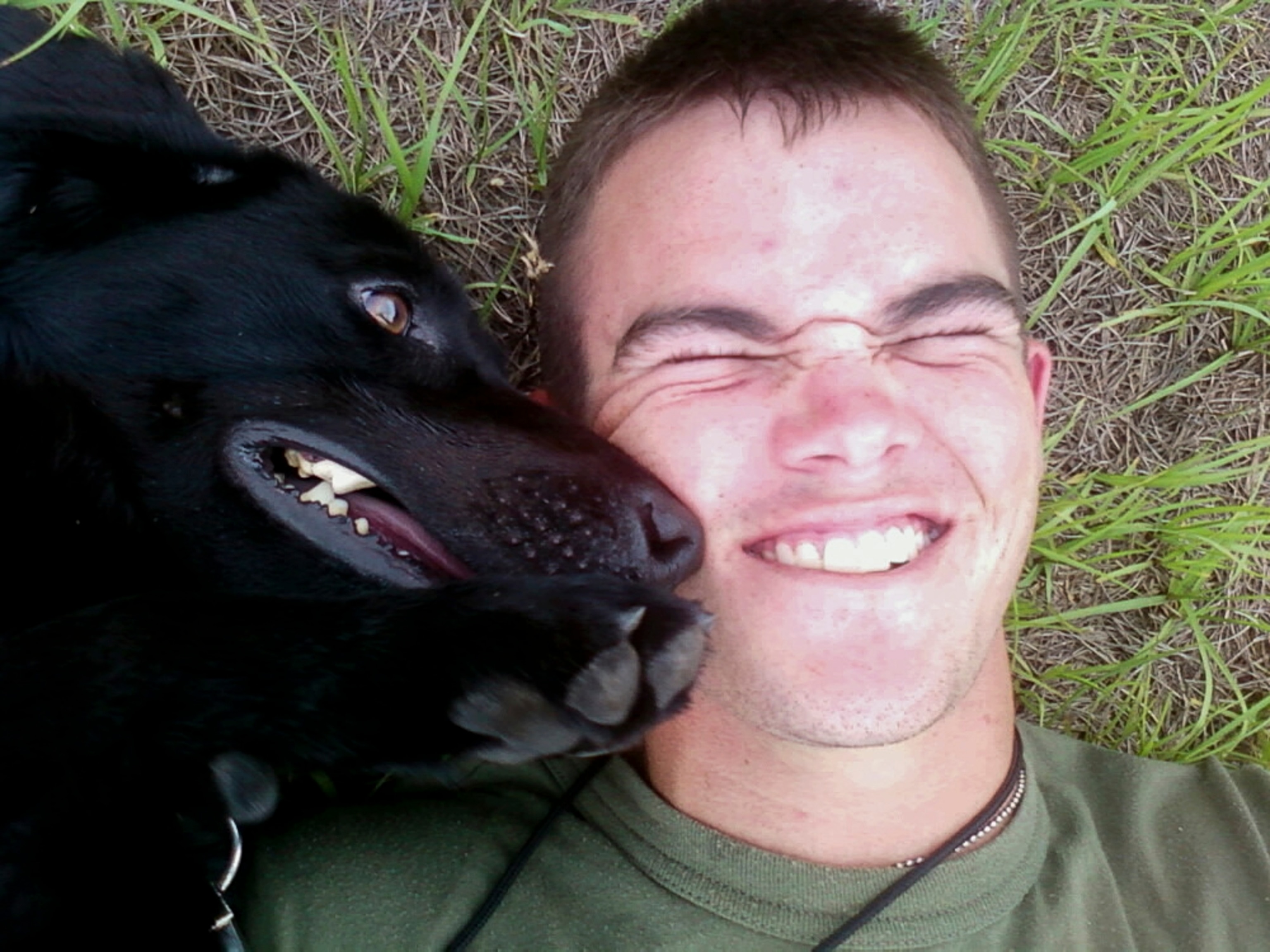
Basic Training
Colton and Eli first met at the American K9 Interdiction training facility in South Carolina, where the energetic black Labrador retriever was paired with the budding dog handler.
At the height of the wars in Iraq and Afghanistan, the U.S. had a force of roughly 2,500 military working dogs. The dogs are usually trained to detect IEDs at Lackland Air Force Base in Texas, the military's primary canine facility.
From the beginning of their months in training, Colton felt a strong connection with Eli. As a handler, he was responsible for every facet of the dog's military life—feeding, grooming, health care. The two became so close that Colton used a photo of himself with Eli as his Facebook profile picture, with the caption "What's mine is also his."
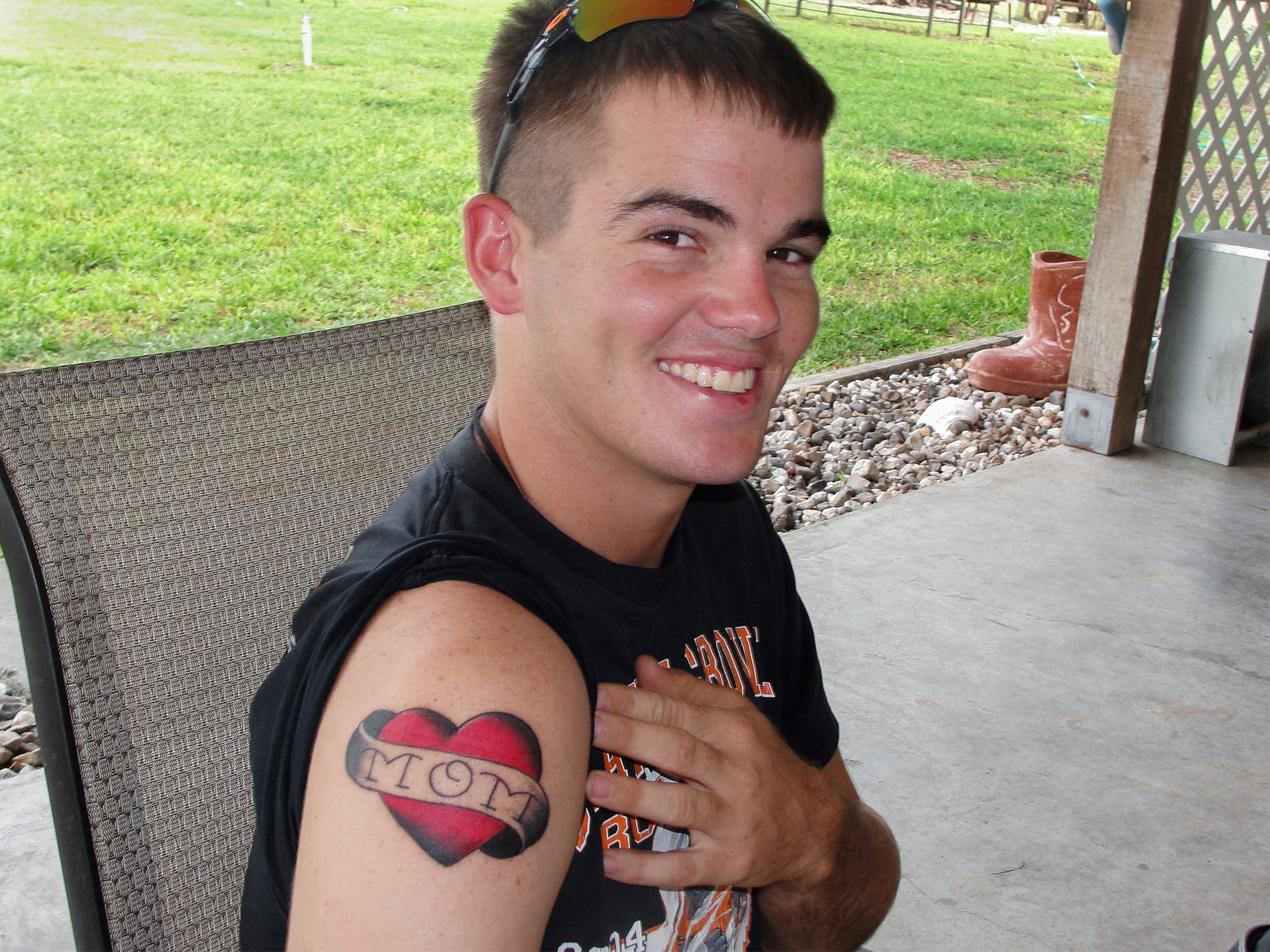
Colton gained a reputation for breaking the rules when it came to his dog. He once had words with another marine about Eli eating in the mess hall. He said that Eli deserved to eat where he ate and sleep where he slept. From then on he would bring his food back to his tent to share with Eli.
The night before he was killed, Colton phoned his parents. It was just the second time they'd been able to talk while he was in country. He told them the guys felt safer when he and Eli were with them on patrol. Before he hung up, he mentioned that he'd finally had a chance to mail them a letter. "Look for it," he said.
The next day Kathy had just arrived at work when she got a call from someone with the military. A man told her that he needed her to come home. She ran to her car, calling Darrell on the way. "I remember the dark blue van parked at my gate," she says. "I remember the men having to do their jobs and recite the words that every mom and dad dread, even though I really don't remember what the words were. I started screaming, 'I just talked to him, he said he was fine, he said he was going to call me today.'"
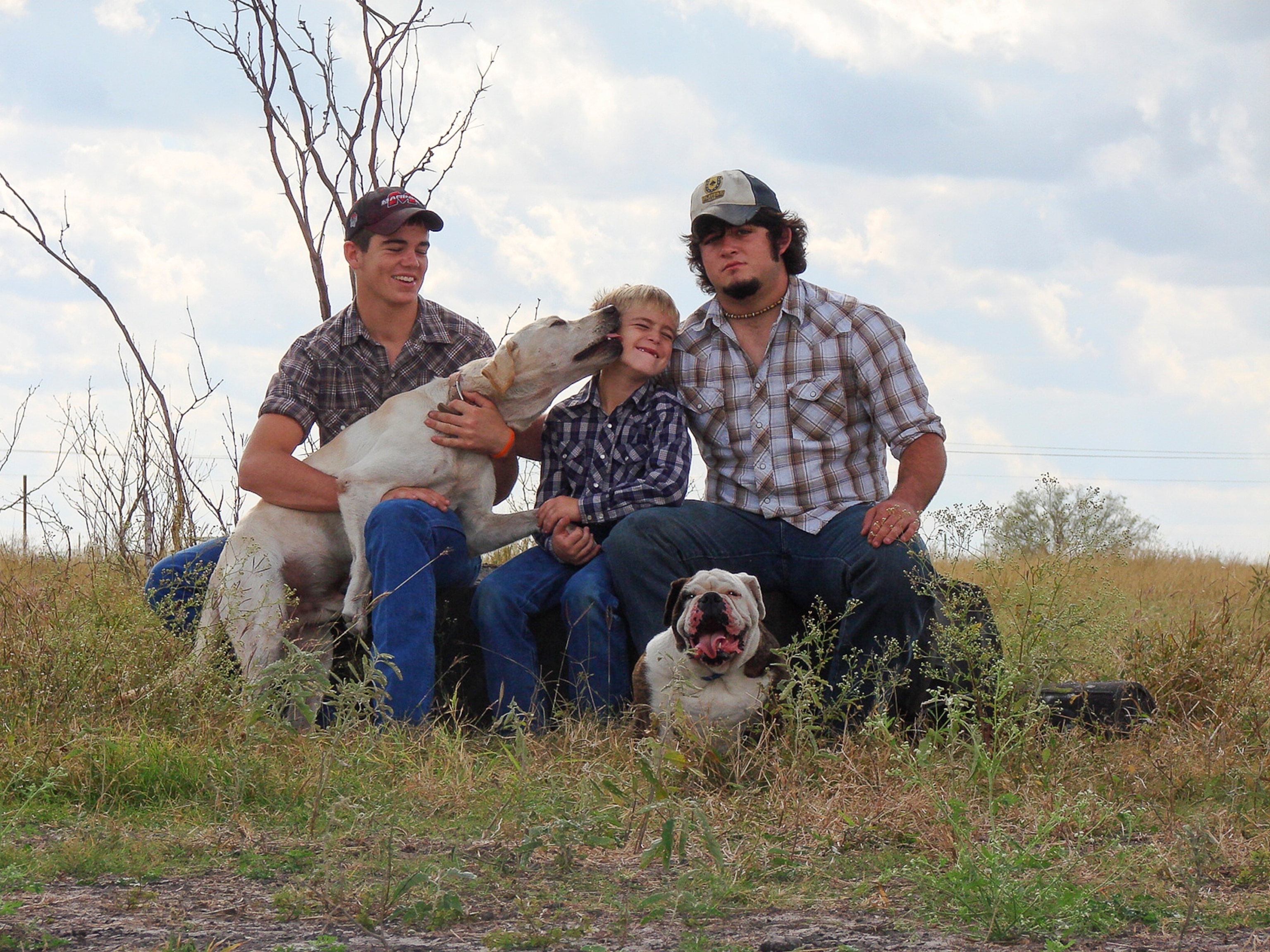
Later she was told that Colton had been on a patrol with a few Humvees when one of the trucks ran over an IED. Only the tire was damaged, and Colton and Eli got out to make sure everyone was OK and see if there were any more IEDs. The area was secured, but as Colton walked back to the Humvees, he was shot by a sniper. Eli jumped on top of him, trying to protect him. The other marines had to pull Eli away and put him in the truck while the medics tried to save Colton. They got him onto a medevac helicopter, but he died of internal bleeding.
In the days that followed, the family hung on to the promise of Colton's letter. "I kept thinking, His last letter is still coming," says Kathy. On December 17, the day before Colton was to be buried, the letter finally arrived.
"Hey Mommy how's life in the real world? It's getting cold here but Eli keeps me pretty warm at night." He'd written "Merry Christmas" in case the letter took a while, adding that he'd received the guardian-angel pin his mother had sent him—he wore it on his flak jacket. At the top of the letter was a smudge. Next to it Colton had written, "Eli sends his kisses."
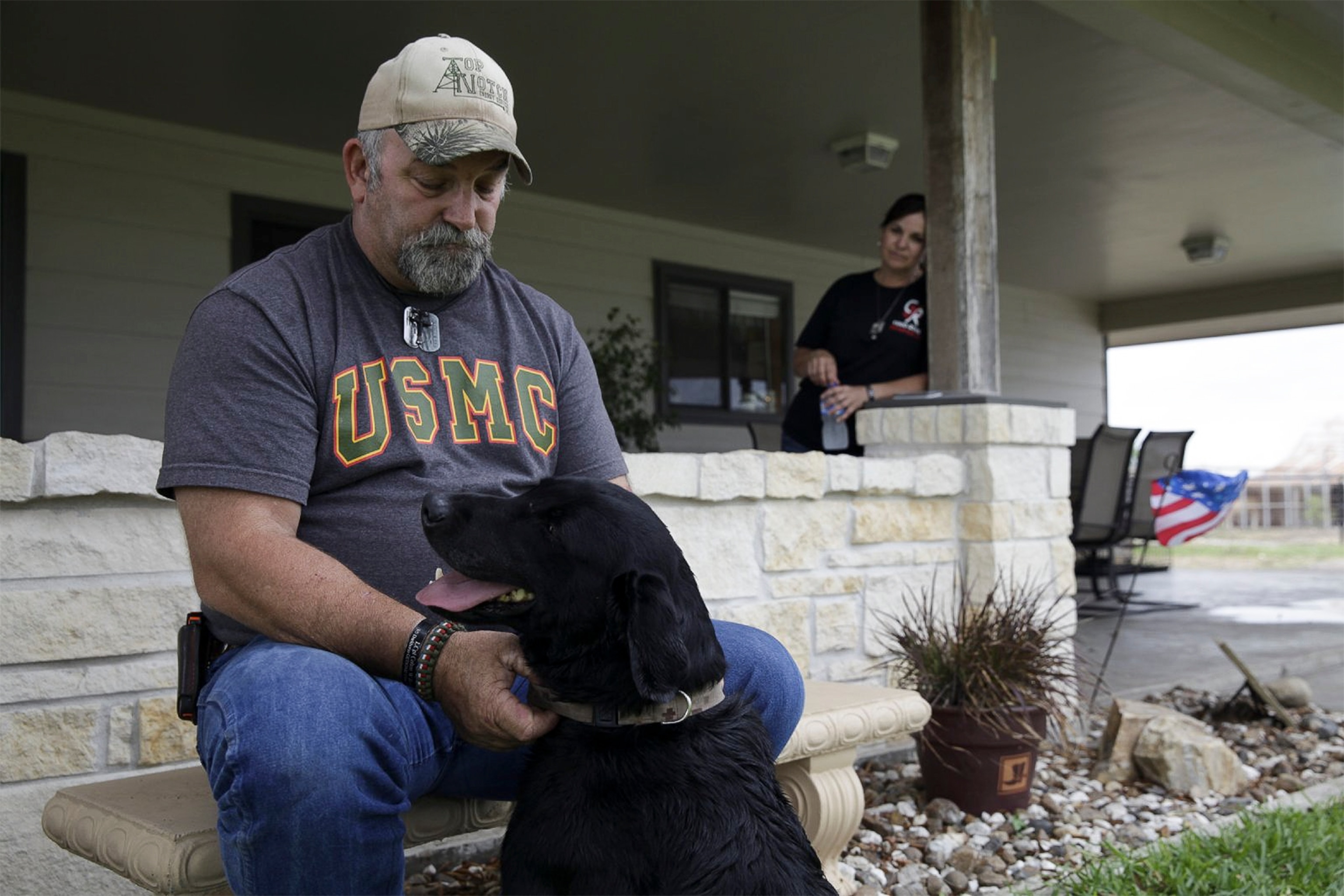
What's Mine Is Also Yours
Shortly after Colton's death, one of the dog trainers who'd worked with him asked the Rusks if they wanted to adopt Eli. It was an unusual proposition. Preference for adopted military dogs is given to former handlers, federal agencies, and local law enforcement, and the process can take up to 18 months.
The Rusks already had two dogs on their ranch, but adding Eli—Colton's dog, the dog that had tried to protect their son—seemed right. Before trying to adopt Eli, the Rusks wanted to be sure they weren't taking him away from any marines who needed him. But the military soon deemed Eli unworkable.
News of their desire to adopt Eli spread, and Governor Rick Perry weighed in on their behalf. Two months later the Rusks finalized the adoption at Lackland.
Kathy worried that Eli might not want anything to do with them. But as soon as he entered the room at Lackland where they met for the first time, her fears dissipated. "Eli just came into our arms. He was here for us. Colton had sent him," she says. "I thought, Everything's going to be OK, we're going to be together, and we're going to take care of each other."
She adds, "Eli will never replace the love we have for Colton. We just feel Colton's love having Eli."
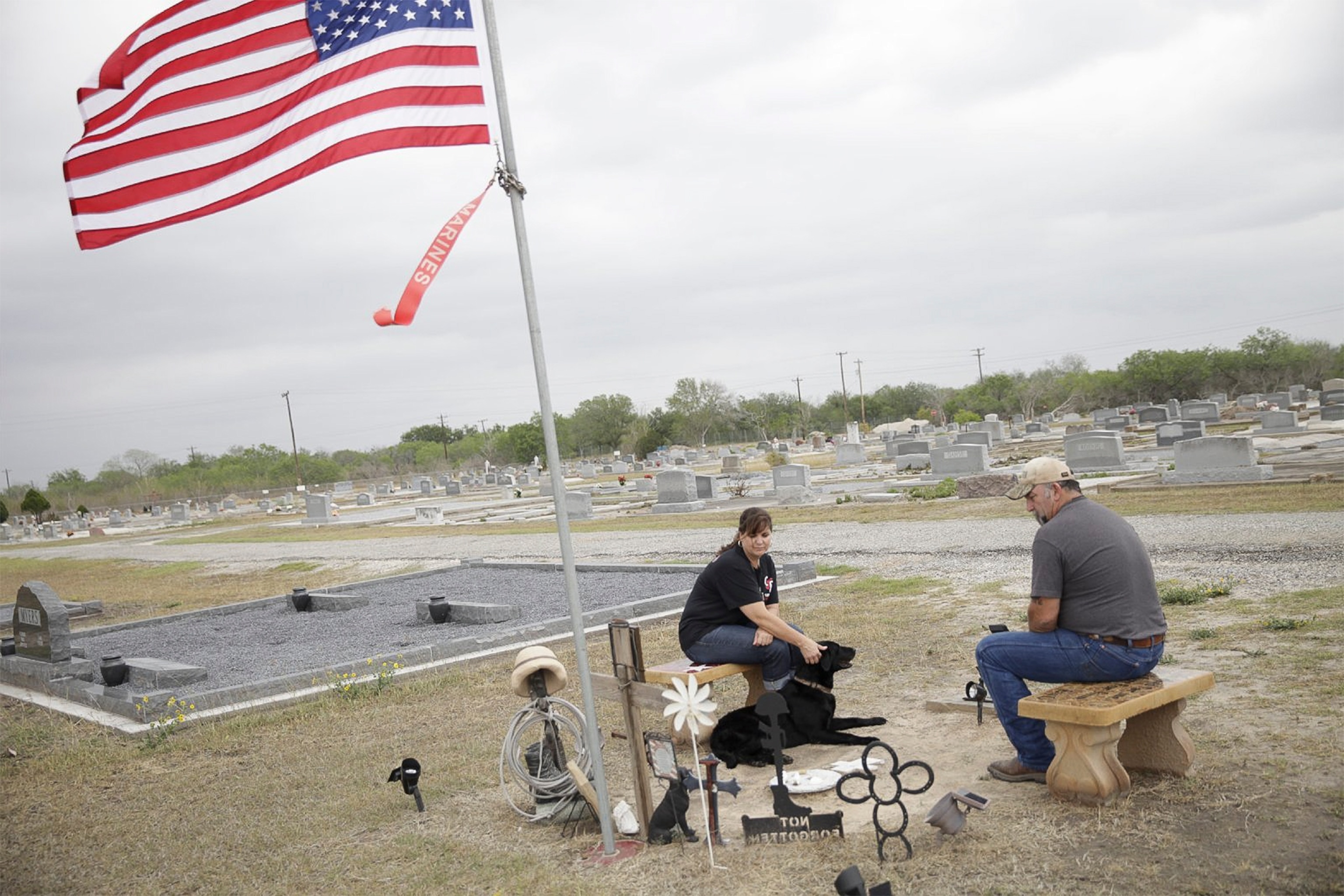
Trainers at Lackland showed the family some commands and how to keep the dog working. But Kathy told them that Eli was now retired and he was going to be just a dog. She and Darrell use only a couple of commands from Eli's training at Lackland, including heel, sit, and go. Sometimes when they tell Colton's story to children at local schools or to veteran's groups, they bring out the Kong, a rubber toy used in Eli's military training to reward him. "When he sees that Kong, he is a different dog," Kathy says. "He knows it is time to work."
The day the family brought Eli home to their 20-acre ranch outside Corpus Christi, Eli ran immediately to Colton's room and jumped up on his bed. "I knew he could sense Colton," Kathy says. Colton's 15-year-old brother, Brady, has slept with Eli every night since.
Kathy says she sometimes feels guilty that she has Eli, knowing that other parents who've lost a child may not have such a close reminder. "I just try to take the best care of him and pray that God grants us many more years with him," she says. When Eli dies, the family plans to cremate him and place his ashes with Colton.
"When you lose a child, that feeling doesn't stop," Kathy says. Yet on the days when it's hard to get out of bed, Eli is still there, waiting to go for a walk or wanting to play fetch. "We keep on going because we know that is what Colton would have wanted."


